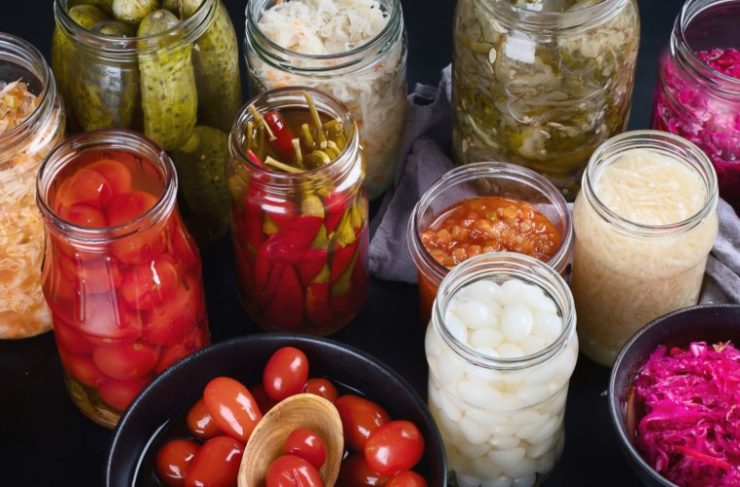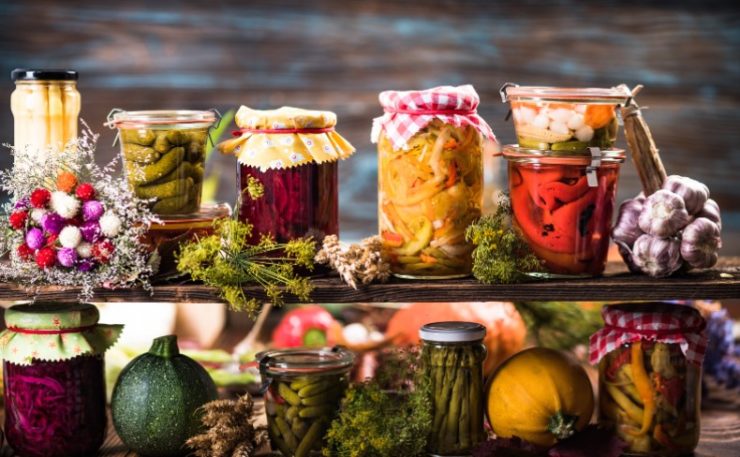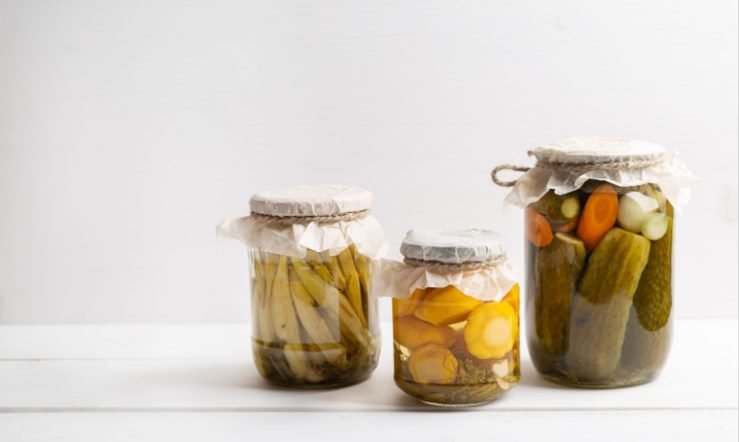Pickling is a form of food preservation that uses acids to slow or halt the growth of bacteria.
During this process food is immersed in a liquid of high acidity-a mixture of vinegar, water, salt, and spices-to impart a tangy flavor and give food a long shelf life, so long as it’s properly canned or jarred.
Pickled foods’ unique flavor and practicality make them a popular product in grocery stores and restaurants alike. There’s even a culture around pickling as a hobby!
As a cook who has worked with many pickled foods, and as a curious hobbyist, we’ll go through the basics of pickling.
In This Article
Pickling vs. Fermentation

Pickling preserves food in an acidic brine which usually contains a lot of vinegar. The pickled food is immersed in this liquid.
Vinegar is an incredibly versatile pantry staple. Its acidity kills bacteria, and it is non-toxic to humans. Combined with basic pickling spices such as dill, peppercorn, and garlic, the distinctive taste of vinegar can transform the most bland vegetables into something to get excited about.
You can enhance the flavor of whatever you are pickling by adding a variety of spices that you probably already have in your cabinet. Tried and true recipes are always a great idea, but sometimes experimentation presents you with a new favorite!
Fermentation doesn’t use an acidic liquid, but is a chemical reaction between sugars and bacteria present in food. For example, sauerkraut is salted, shredded cabbage that has fermented, and kimchi is another example of fermented food.
Bread and yogurt are also created using fermentation.
Why Pickle?
Pickling adds a sour and tangy flavor to food, and alters its texture.
Cucumber pickles are probably the most universal example. These are made by immersing cucumbers in an acidic brine.
Other than the incredible flavor of pickled goods, another benefit is that they don’t require refrigeration. This fact alone has made pickling popular and practical for thousands of years.
Nowadays, there are many pickling enthusiasts that pickle everything from asparagus, hard-boiled eggs, and blueberries, to plums and watermelon rinds!
Quick Pickling
Pickling food is sometimes a slow process, but it doesn’t always need to be.
To quick pickle, make a solution of equal parts water and vinegar. You can adjust this ratio depending on your taste. Add sugar and other spices, and bring the mixture to a boil.
Put your vegetables of choice in a jar, and pour the liquid into the jar, making sure to fully immerse the vegetables. Allow this to cool to room temperature.
With this method, you can store the quick pickled vegetables for up to two weeks.
My favorite thing to quick pickle is a mixture of shredded daikon, red cabbage, carrots, and cucumbers. I used this as a garnish for a Filipino food truck, and it was quite tasty, sweet, tangy, and popular.
Canning, Storage, And Safety

Apart from the unique flavor of pickled foods, the ability of this technique to preserve food almost indefinitely is another big draw.
When properly pickled with sterilized cans or Mason jars, pickled foods can be stored at room temperature and boast a long shelf life.
If you can or jar food in containers that haven’t been properly sterilized, mold can start to grow.
If you quick pickle and refrigerate, this isn’t as much of a concern, but if you’re pickling large quantities of food for extended storage this is crucial. Here is a great guide to pickling from the National Center for Home Food Preservation.
Frequently Asked Questions
How does pickling preserve food?
Pickling uses acids, like vinegar, and heat to halt bacterial growth.
What does vinegar do in the pickling process?
Vinegar is an acid that is nontoxic to humans and kills bacteria. It’s also key to pickled foods’ tangy signature flavor.
How does pickling prevent the growth of bacteria and fungus?
Pickling prevents the growth of bacteria by using heat (boiled vinegar solution) initially, and high acidity that makes it unsuitable for microorganisms.







